South Korea plane crash: Everything we know about country’s worst domestic air disaster
Footage shows Boeing 737-800 skidding along runway at Muan airport before hitting wall and catching fire
Your support helps us to tell the story
From reproductive rights to climate change to Big Tech, The Independent is on the ground when the story is developing. Whether it's investigating the financials of Elon Musk's pro-Trump PAC or producing our latest documentary, 'The A Word', which shines a light on the American women fighting for reproductive rights, we know how important it is to parse out the facts from the messaging.
At such a critical moment in US history, we need reporters on the ground. Your donation allows us to keep sending journalists to speak to both sides of the story.
The Independent is trusted by Americans across the entire political spectrum. And unlike many other quality news outlets, we choose not to lock Americans out of our reporting and analysis with paywalls. We believe quality journalism should be available to everyone, paid for by those who can afford it.
Your support makes all the difference.All but two of the 181 passengers and crew on a Jeju Air flight have been killed after the plane crash-landed and skidded off a runway at a South Korean airport and hit a concrete perimeter fence, bursting into flames.
The country’s fire service has said that two crew were rescued from the wreckage, but it is the worst aviation disaster ever in South Korea.
Here is everything we know so far:
What happened?
The Jeju Air flight from Bangkok crashed while attempting to land at Muan International Airport in southwestern South Korea on Sunday morning. Footage showed the Boeing 737-800 “belly landing” without landing gear and sliding at high speed along the runway before hitting the wall.
Local TV stations aired footage showing thick plumes of black smoke billowing from the plane, which was engulfed in flames.
Witnesses reported hearing loud “bang” noises before the aircraft struck the wall.
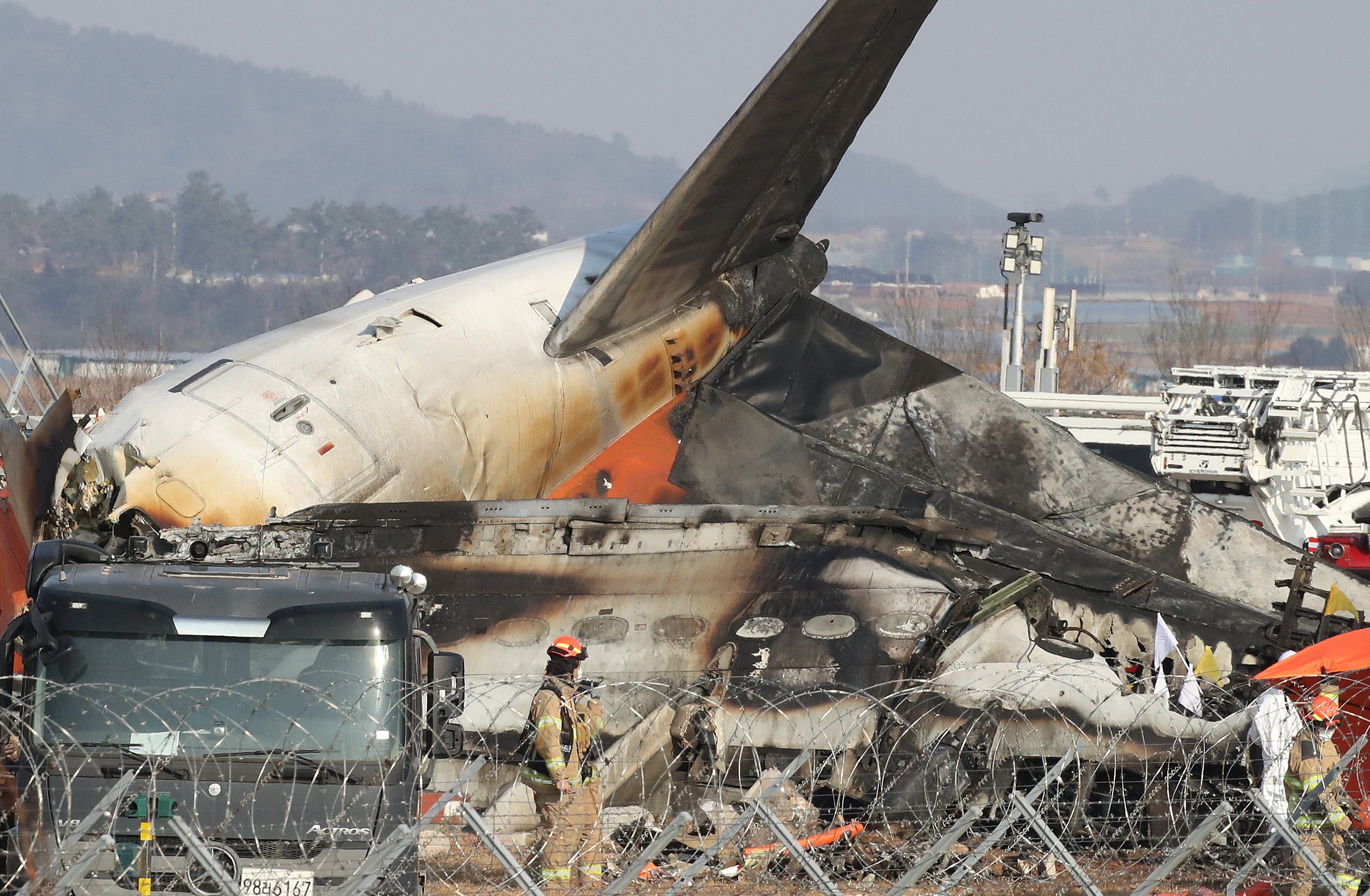
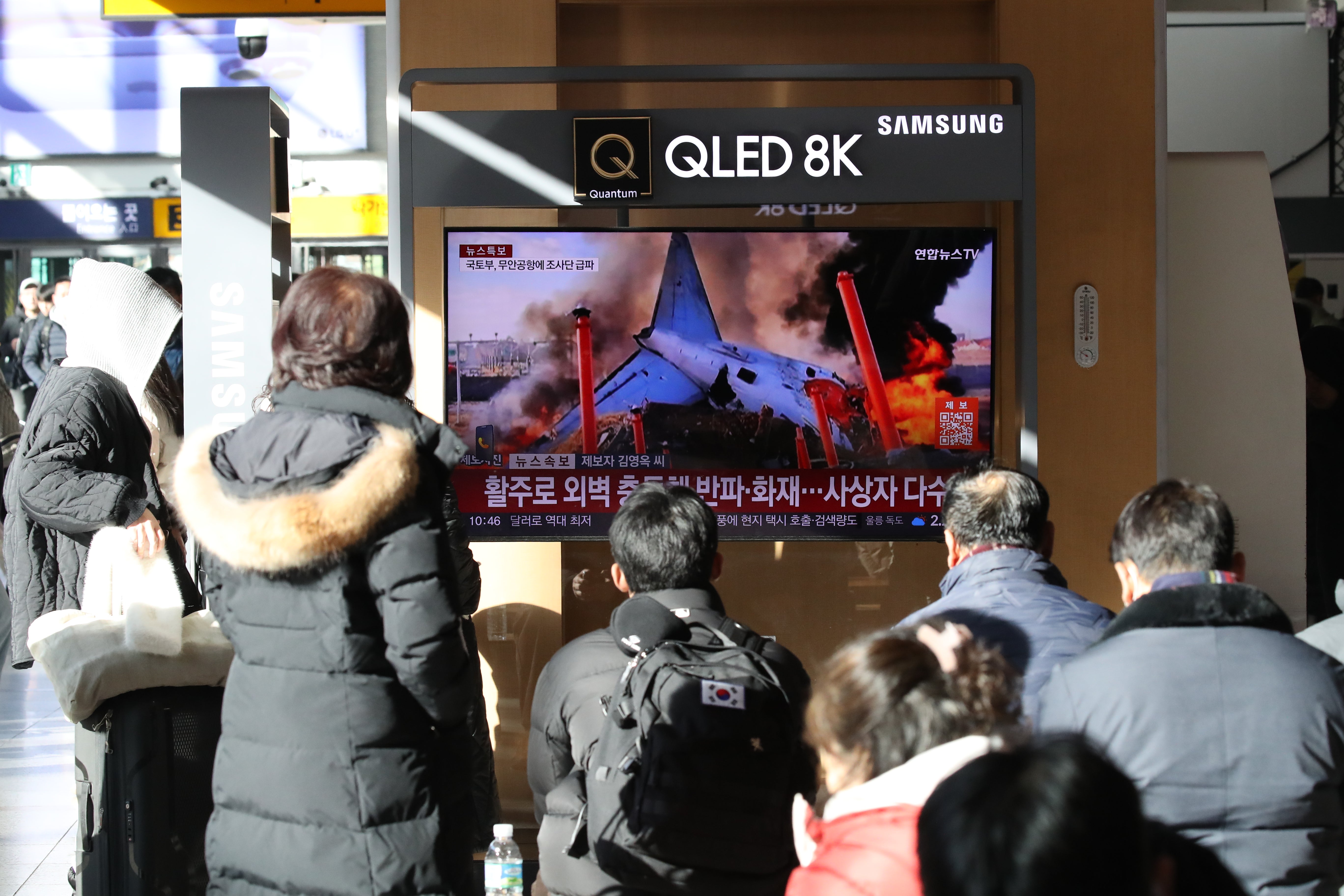
What was the cause of the plane crash?
The exact cause of the crash is still under investigation. Local broadcaster MBC aired footage that appears to show a bird strike incident as the plane was descending. Officials have also said weather conditions may have played a role.
The crashed plane's black box has been retrieved, according to a senior Transport Ministry official.
Transport Ministry officials have said their early assessment of communications records show the airport control tower issued a bird strike warning to the plane shortly before it intended to land. The flight had reportedly attempted one landing before being forced to “go around” when the landing gear failed to lower normally.
Jeju Air CEO Kim Yi-bae said later they had found no issues when the plane was inspected prior to the crash.
“The question about whether the landing gear was working properly or not is related to the accident investigation,” he said. “You will hear the result when it comes out.”
8.57am local time: Muan International Airport’s control tower issued a warning over possible bird strikes.
8.58am: The pilot sent a “Mayday” distress signal.
9am: The plane attempted to land on the runway but failed to deploy its landing gear.
9.03am: the aircraft crash-landed on its fuselage, collided with the airport fence, and erupted into flames.
Experts said the bird strike report and the way the aircraft attempted to land raised more questions than answers.
"At this point there are a lot more questions than we have answers. Why was the plane going so fast? Why were the flaps not open? Why was the landing gear not down?," said Gregory Alegi, an aviation expert and former teacher at Italy's air force academy.
According to the transport ministry, investigators have recovered both black boxes from the wreckage: the cockpit voice recorder at 11.30am and the flight data recorder at 2.24pm. Eight aircraft accident investigators and nine aviation safety inspectors were conducting initial investigations at the scene.
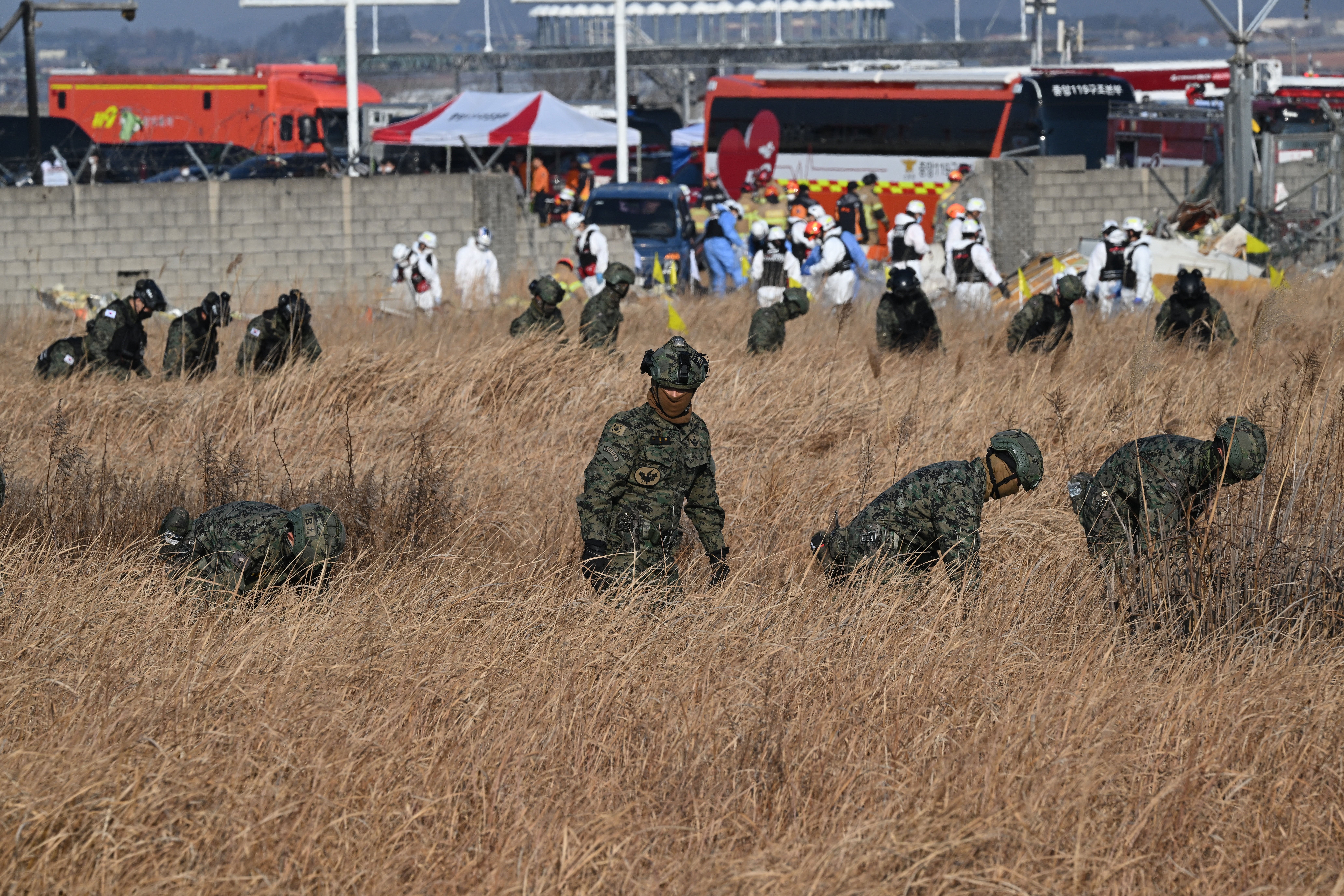
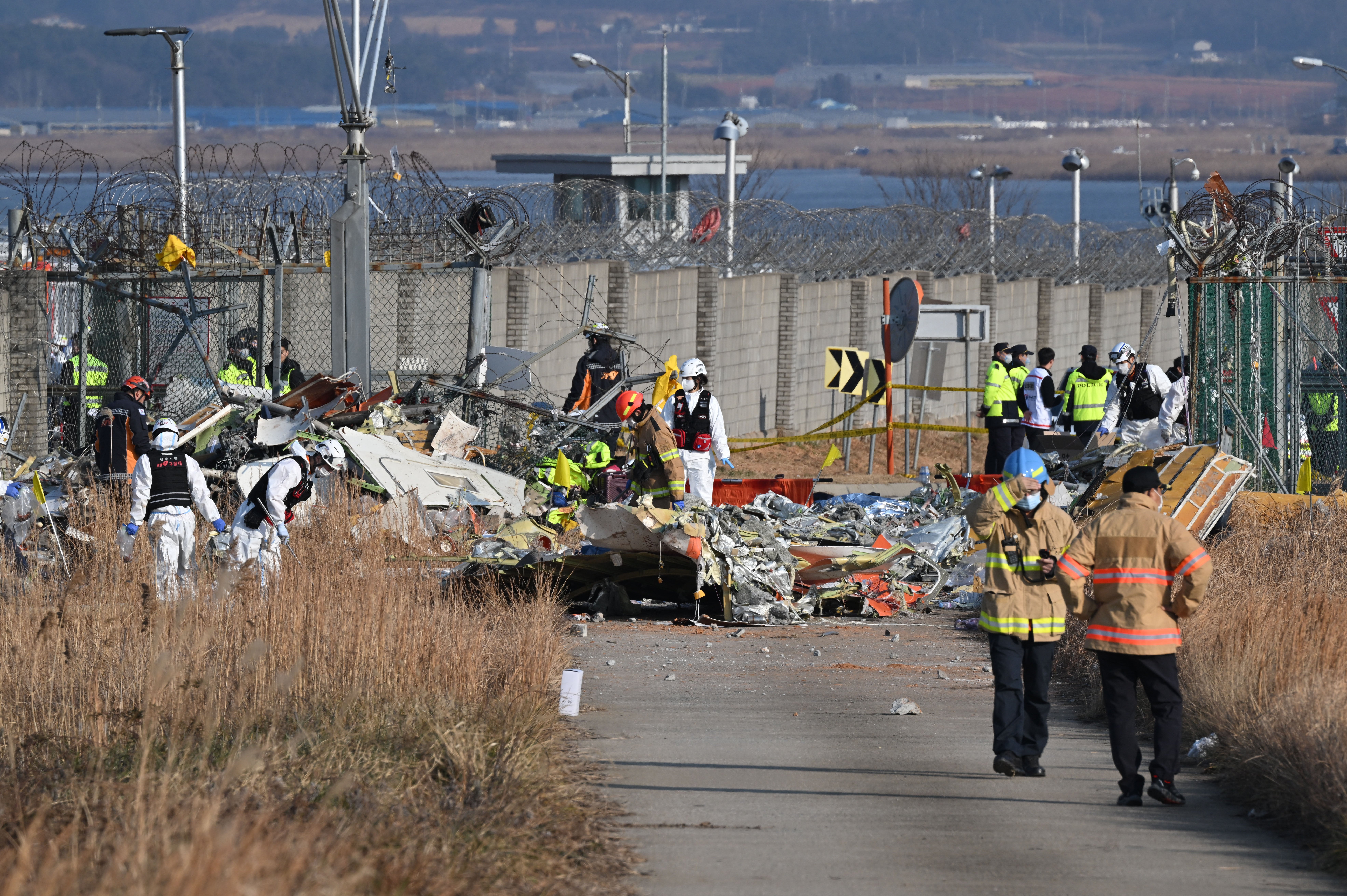
Who survived?
The only two survivors so far are two of the six crew members.
Media reports indicate that they were near the rear emergency exit. It’s believed they escaped after the tail section detached during the crash.
They were pulled from the wreckage and taken to hospital.
One of the survivors was being treated for fractures to his ribs, shoulder blade and upper spine, said Ju Woong, director of the Ewha Womans University Seoul Hospital. Mr Ju said the 33-year-old man, called Lee in local media, told doctors he "woke up to find [himself] rescued." The other survivor is believed to be a 25-year-old woman.
Who else was on board?
Among the 175 passengers aboard the flight, the youngest passenger was a three-year-old boy and the oldest was 78.
Five of the dead were children under the age of 10, authorities said.
There were also two Thai women aged 22 and 45, according to the Thai government. The rest of the passengers were South Korea nationals.
Hours after the crash, family members gathered in the airport's arrival area, some crying and hugging as Red Cross volunteers handed out blankets.
Families screamed and wept loudly as a medic announced the names of 22 victims identified by their fingerprints. Papers were circulated for families to write down their contact details.
Mortuary vehicles lined up outside to take bodies away, and authorities said a temporary morgue had been established.
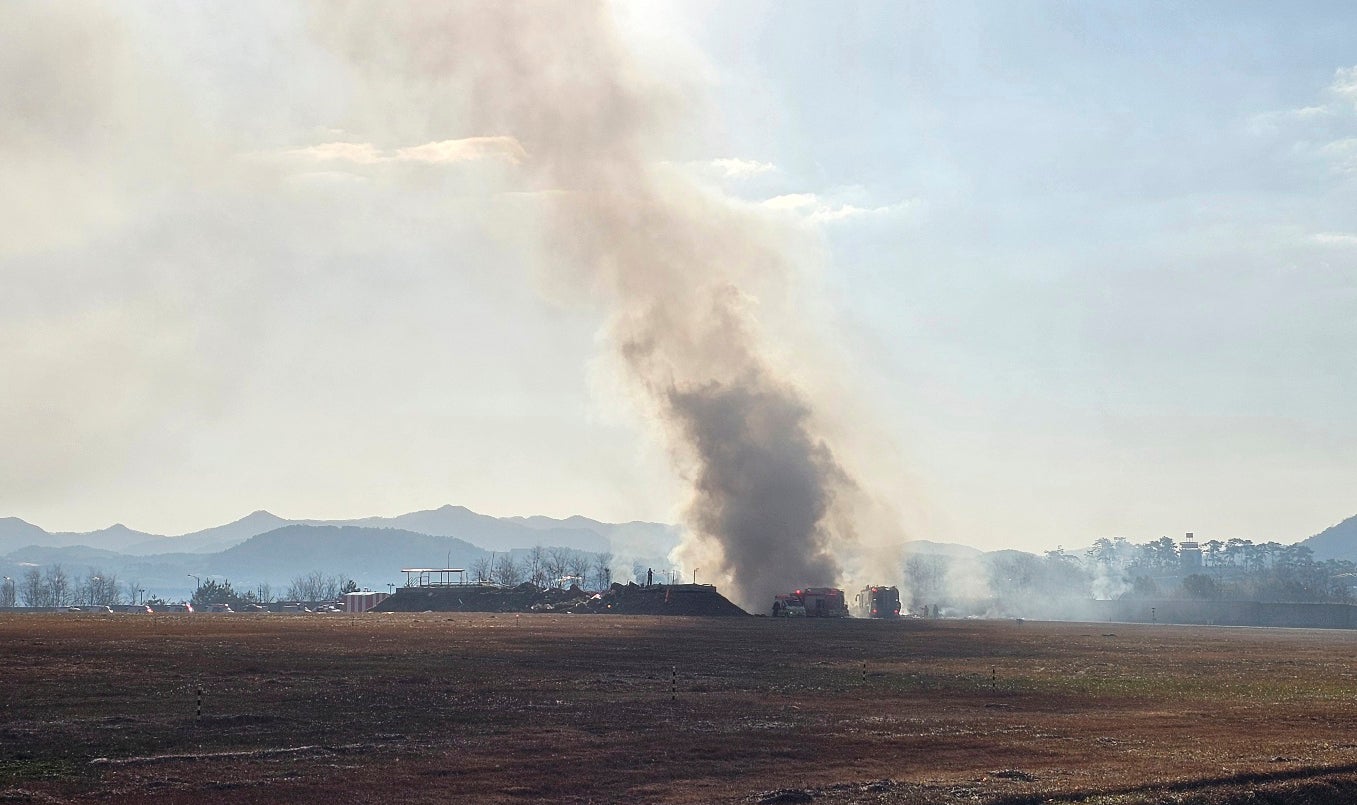
What have Jeju Air and Boeing said?
In a televised news conference, Kim E-bae, Jeju Air’s president, bowed with other senior company officials as he apologised to bereaved families and said he takes “full responsibility” for the incident.
Mr Kim said the company hadn’t identified any mechanical problems with the aircraft following regular checkups and that he would wait for the results of government investigations into the cause of the incident.
The crash was not due to "any maintenance issues", the head of Jeju Air's management team added later.
According to the Yonhap news agency, Song Kyung-hoon told a press briefing: "There are areas we have to investigate further by determining the exact cause of the crash."
He added that there is a schedule for maintenance checks and that they leave "no stone unturned" regarding maintenance work ahead of take-offs. The official also said that the company's insurance plan should be able to support the victims and their families.
A separate statement from the airline expressed a “deep apology” over the crash and said it will do its “utmost to manage the aftermath of the accident”.
Boeing said in a statement on X it was in contact with Jeju Air and is ready to support the company in dealing with the crash.“We extend our deepest condolences to the families who lost loved ones, and our thoughts remain with the passengers and crew,” Boeing said.




Join our commenting forum
Join thought-provoking conversations, follow other Independent readers and see their replies
Comments